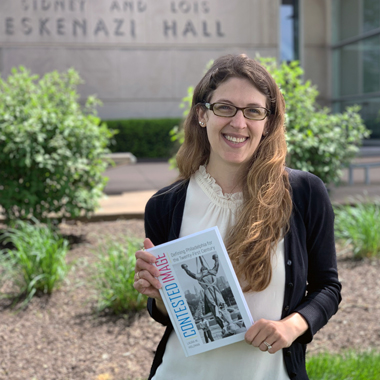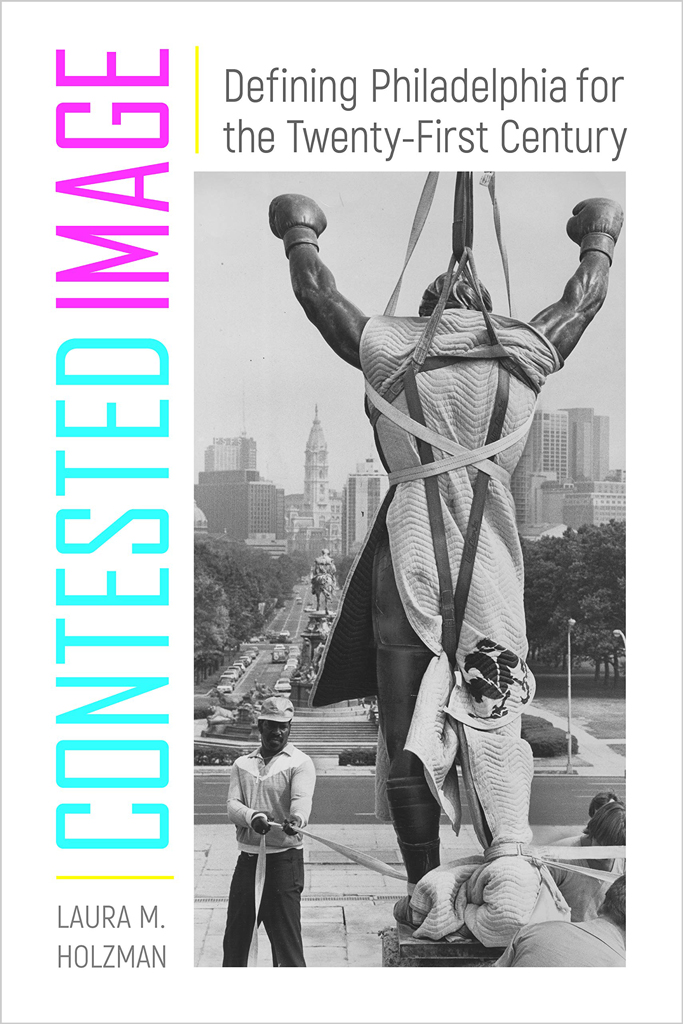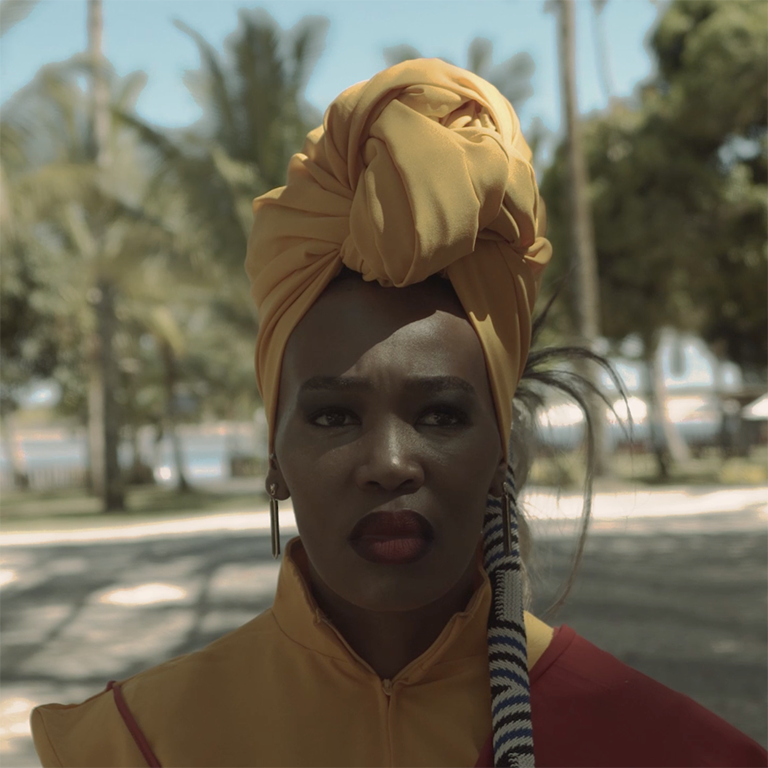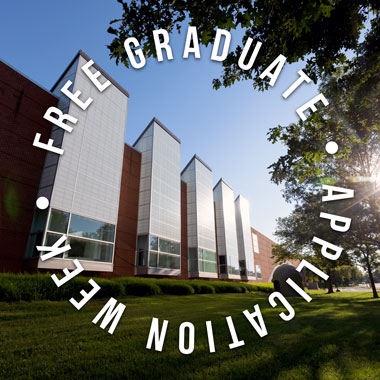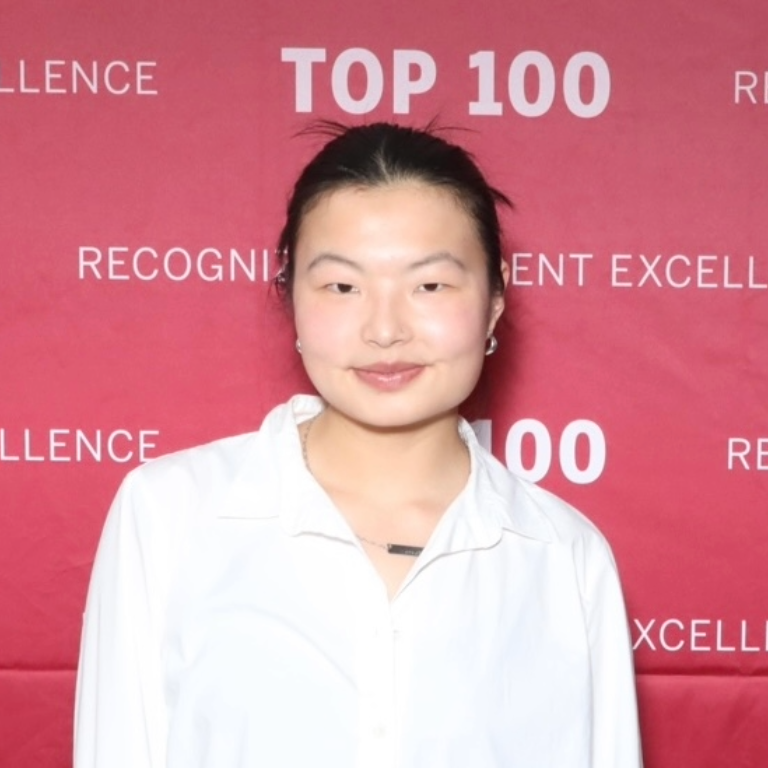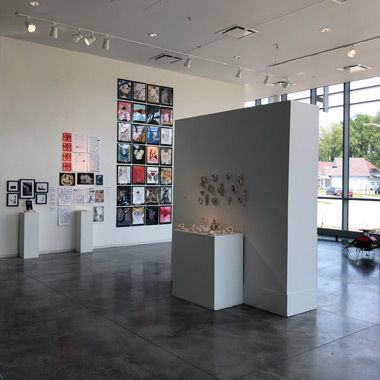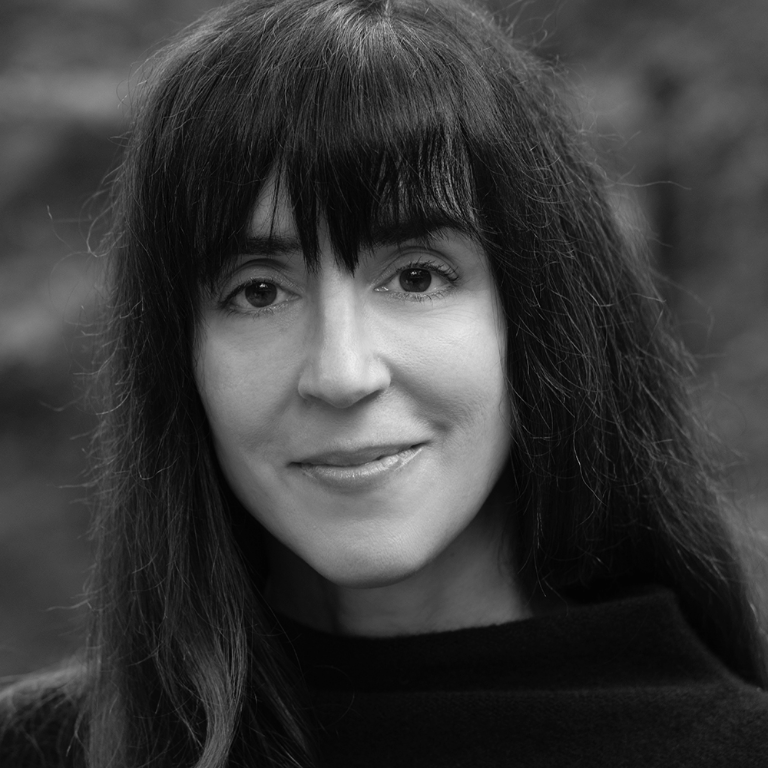I couldn't have articulated this when I started working on the project, but the mode of art history scholarship that I am really interested in is public scholarship. What that means is doing scholarship that's meaningful and shareable outside of academia and written in a way that is accessible. It can also mean scholarship that's generated in collaboration with people outside of a university – that's the work I do now.
My book looks like very traditional scholarship because it's a book published by a university press and written by only one person. But my research questions didn't come from conversations that were happening inside academia; they came directly from conversations that were happening outside in the world. I'd first heard about these issues on the radio and while sitting on the train in Philadelphia, listening to the people around me. People were having really passionate conversations about where art belongs.
Some of these conversations were divisive. They made me wonder, what's really going on? How can I use my resources as a scholar to interpret this discourse constructively? My professional experience in Philadelphia's arts and culture sector allowed me to develop a sensitivity to the issues at stake as well as understanding of who the major players are and how these stories unfolded. As I offer my own interpretation of each episode, I also try to honor the voices of the people who participated in these public exchanges about issues they cared very deeply about. I see this book as my way of contributing to those conversations.
HERRON: What's your connection to Philadelphia?
HOLZMAN: I've spent a lot of my life in and around Philadelphia – visiting family, going to college, working with arts and culture organizations. My experiences there shaped how I approached the material in the book.
When I worked at the Philadelphia Museum of Art I walked up the Rocky steps almost every day on my way to work. It was hard not to think about the relationship between the Rocky statue and the site of the museum.
I was also working at the museum when Thomas Jefferson University sold "The Gross Clinic." The university had made a deal with philanthropist and arts patron Alice Walton, who was collecting art for the Crystal Bridges Museum in Bentonville, Arkansas, and the National Gallery of Art in Washington, D.C. The university said, 'Ok, you guys can buy the painting for $68 million, unless a local institution can match the price.' Oh, and they told local institutions, 'You have 45 days to match that enormous price.' There was a massive fundraising effort and a huge public relations campaign to generate the interest and the dollars to purchase the painting. With support from that campaign, the Philadelphia Museum of Art and the Pennsylvania Academy of the Fine Arts jointly purchased the artwork.
I wasn't thinking about it in an academic way at the time, but I was steeped in the environment of what was going on because of my job as a press relations coordinator. One of my responsibilities was to keep track of all the press clips that were generated about the institution. I'm a curious person, so I read them all. And then I didn't really think much of it. When I went to graduate school, I revisited the newspaper articles and blogs about the painting. I thought, 'There's something going on here that people aren't talking about' and that was the hook for me and this research project.
HERRON: Is that what you went to graduate school to study?
HOLZMAN: Not at all. There's a good story about that, actually. During my first quarter in the interdisciplinary PhD program in visual studies at UC Irvine [University of California, Irvine], I was waiting in the department office and one of the professors walked into the room. I casually mentioned that I'd noticed she would be teaching a seminar on museums, cultural memory, and history. She responded by saying, 'I'm so glad you'll be taking it!' So, I enrolled in the class because I felt I'd made some kind of unintentional verbal commitment to take the course.
For the research project, we could write about anything we wanted that related to the subject of the seminar. I just kept thinking about "The Gross Clinic" and I had to get it out of my system. I wrote the paper and, I'm not kidding, it was the easiest first draft I've ever written. It was like the story was writing itself.
HERRON: What kinds of memories did you study during your research?
HOLZMAN: One of the things I noticed from reading all of those press clips and blog posts was that people were making it really personal when they were talking about "The Gross Clinic" and how it belongs in Philadelphia. For example, somebody said that it would be almost like losing a friend if the painting were to leave Philadelphia. There was this very personal language of memory and trauma that resonated with themes we'd examined in the class, so it came together as a really interesting example of memory practices related to museum collection practices.
HERRON: So, how did your short seminar paper turn into a 200-page book?
HOLZMAN: I ended up revising and expanding it fairly substantially for my master's thesis. I revised and expanded it again for a chapter in my dissertation. Then, I revised and expanded it again for the book. Along the way, I added chapters about other prominent public conversations about where art belongs in Philadelphia, and I learned that the stories of "The Gross Clinic," the Barnes Collection, and the Rocky statue are deeply intertwined with one another and with Philadelphia's identity.
When I was trying to figure out what I wanted to write about, my dissertation advisor said, 'Make sure it's something you're really okay with thinking about for ten years.' I thought, 'Pshh, ten years.' The first words that I typed for this research were in 2008. It's really been eleven years!
HERRON: How does it feel to finally see the book in front of you?
HOLZMAN: When I first held it in my hands I was like, 'Oh my gosh, this is really a thing.' There were definitely times when I thought this was not going to be a thing. Writing is really hard and the process of writing a book is very complicated. Enough of the steps are beyond the author's control that it can feel like it might never manifest into anything. It is really cool to have this physical evidence that I completed the project.
I'm excited to have the book out in the world. I've published segments of the book previously, but now people can know the other parts of the story. It's also a little bit scary, in part because of the way I've been doing scholarship for the past few years, which involves a lot of collaboration with stakeholders along the way. But with this, I've put it out in the world and, sure, it's gone through academic peer review, but somebody might read this book and see their name in it because they gave a quote to a journalist and now it's in the book. I wonder, is that person going to appreciate the way that I used their language? I hope that they will. I feel the weight of the responsibility of writing about people's lives.
HERRON: What impact do you hope to make with "Contested Image?" What do you hope readers will take away from the book?
HOLZMAN: I think that people across the country and internationally can learn a lot from looking at my research in the book. We can learn about how people are using visual culture to define the places where they spend time. I also want to contribute to a shift in ways of thinking about which places are valuable for people to study from a distance. For example, you asked me earlier about my connection to Philadelphia. Would you have asked a similar question if this book were about New York?
Since I moved to Indianapolis, I've seen a lot of things that remind me of what I know about Philadelphia from the 1990s and the 2000s as the city started to change the way it was talking about itself and as the city started to invest in different areas. Philadelphia has major issues that it's still working out, so I don't want to imply that Philadelphia is perfect. But I think there's a valuable lesson in the ways Philadelphia embraced the arts and culture sector as a major element of its new identity.
Indianapolis would really benefit from following a similar lead and recognizing that the arts and culture are central to making a place a vibrant and rewarding place to live, work, and visit. Arts and culture can look like different things for different people. We benefit from having a variety of those things, but we also benefit from truly embracing the possibilities that they offer.


